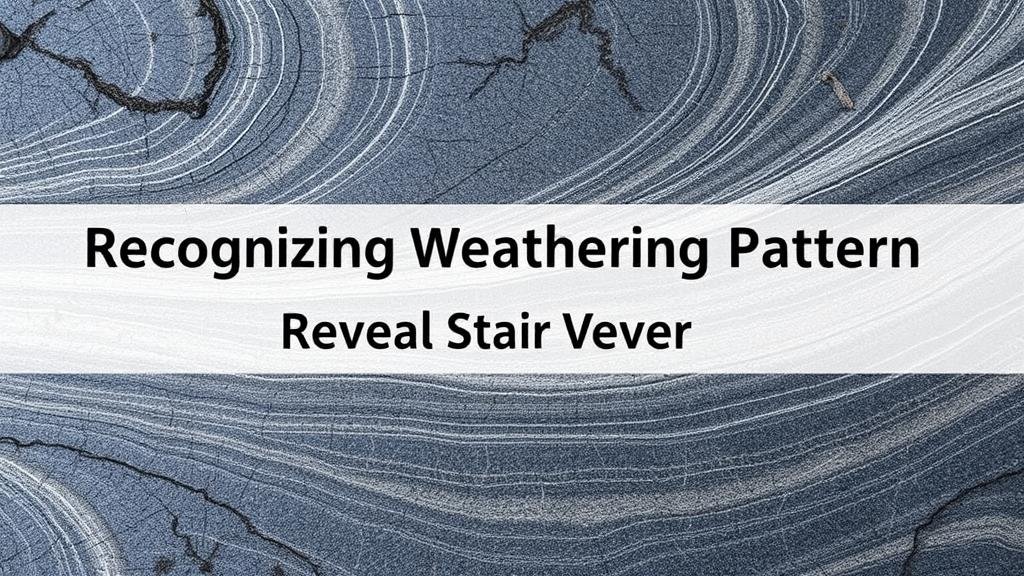Recognizing Weathering Patterns That Reveal Silver Veins
Recognizing Weathering Patterns That Reveal Silver Veins
The study of geology and mineralogy involves understanding processes that lead to the formation of valuable resources, such as silver. Weathering, a crucial geological process, can significantly influence the visibility and accessibility of silver veins. This article explores the types of weathering patterns that can be indicative of the presence of silver, integrating concrete examples and real-world applications.
Understanding Weathering Processes
Weathering is the breakdown of rocks and minerals through physical, chemical, or biological processes. In the context of silver mining, the primary types of weathering relevant to silver veins are:
- Physical Weathering: This process involves the mechanical breakdown of rocks without chemical alteration, often influenced by temperature changes and moisture.
- Chemical Weathering: In this process, chemical reactions lead to the dissolution or alteration of minerals, often releasing metals like silver into surrounding soils and sediments.
- Biological Weathering: Organic material and life forms contribute to weathering through the production of acids and physical disturbance of rock formations.
Each type of weathering leaves distinct patterns that can help geologists identify potential silver deposits.
Identifying Key Weathering Indicators
Recognizing the signs of weathering that may indicate underlying silver veins is essential for any exploration effort. Some key indicators include:
- Soil Color Changes: The presence of silver can be detected by examining the color of soil and rock. Soil that displays a distinct metallic sheen or grey hue may suggest nearby silver deposits.
- Mineral Alteration Patterns: Specific minerals, such as argentite (silver sulfide), may weather into secondary minerals. Identifying these alterations can forecast silver vein locations.
- Ground Structure: Weathering often affects the structural integrity of surrounding rock formations, such as the development of fractures and fissures, which can lead to the exposed veins of ore.
Case Studies: Weathering Patterns in Silver Mining
Real-world examples provide insights into how weathering patterns have been effectively utilized in silver exploration. One notable example is the historic Comstock Lode in Nevada, a prominent silver mining site where weathering processes played a crucial role in silver extraction.
Initial discoveries of silver in the Comstock Lode were made possible through weathering indicators such as:
- Altered mineral assemblages observed on the surface, which included lead and silver-bearing minerals.
- Soil color changes that indicated areas with potential mineralization.
- Fractured rock formations that suggested pathways for mineral movement.
Another example includes the silver mining operations in the Andes Mountains, where high altitude weathering resulted in distinct patterns indicating underground silver deposits. By analyzing the erosion patterns and mineral compositions, geologists were able to locate viable silver veins.
Utilizing Technology in Recognizing Weathering Patterns
Advancements in technology have greatly enhanced the ability to recognize weathering patterns associated with silver veins. Techniques such as remote sensing and geochemical analysis are now employed to assess soil and rock formations accurately.
For example, satellite imagery can reveal large-scale weathering patterns, while geochemical analysis provides detailed information on the concentration of silver in soil samples. These methods allow for more efficient resource identification and management, reducing both time and costs associated with traditional exploration methods.
Conclusion: Actionable Takeaways
Recognizing weathering patterns that may signify silver veins is vital for effective mineral exploration. By understanding the types of weathering processes and indicators, resource managers and geologists can better identify potential mining locations. From analyzing soil color and mineral alteration to leveraging technology for detailed examinations, employ these insights for more informed decision-making in silver exploration.
Key actionable takeaways include:
- Incorporate geological surveys focusing on weathering signs when scouting for silver.
- Use modern technology to enhance exploration strategies and minimize costs.
- Stay informed about case studies and historical data to optimize exploration efforts.



